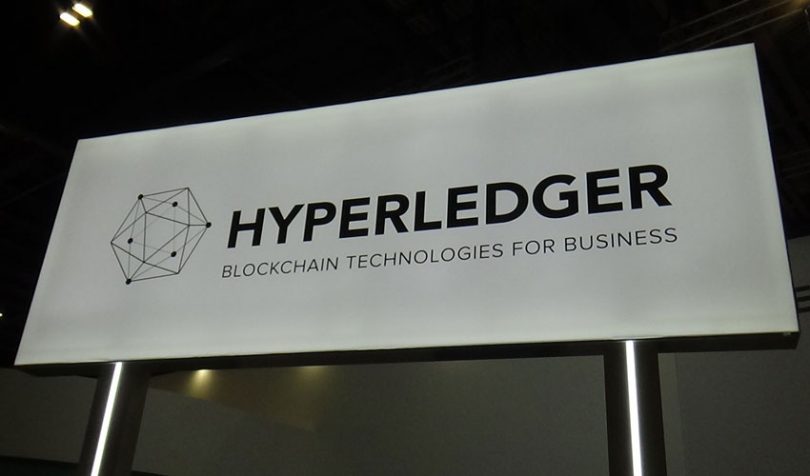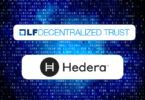Today enterprise blockchain association Hyperledger announced a new leader, Daniela Barbosa who has been with Hyperledger and the Linux Foundation for more than four years. Barbosa was previously the VP of Alliances for Blockchain, Healthcare and Identity projects at the Linux Foundation. She replaces Brian Behlendorf who has been Executive Director of Hyperledger since May 2016, six months after the organization’s founding.
Behlendorf will now head up another Linux Foundation initiative, the Open Software Security Foundation. He’s been brought in to transform that project from a volunteer group to paid membership with commitments of over $10 million, including support from Microsoft and Google.
When Behlendorf joined Hyperledger in 2016, his boss invited him to “come in and reinvent the nature of trust,” said Behlendorf. “And I think really the blockchain space, both the permissioned and public blockchain space are doing that.”
Hyperledger transcends Fabric
A little over two years ago, if you attended a business blockchain event, there was much confusion between Hyperledger the organization and the Hyperledger Fabric blockchain. While Fabric has continued to be popular, Hyperledger is now a diverse portfolio, including the Hyperledger Besu Ethereum client that can be used in a private blockchain or on the public Ethereum mainnet. A recent Besu example is its use for minting DC Comics non-fungible tokens.
The crypto boom is enticing more and more enterprises to jump into both public and private blockchains. However, Behlendorf emphasized that enterprise blockchain is a long game.
“This is a consortium. This is something that requires working with your supply chain, often your competitors, to build something in common,” said Behlendorf. “And it doesn’t necessarily lend itself to competitive advantage, at least in a very short window of time.”
Like open source, DLT involves a mindset change
He sees parallels between that willingness to collaborate with competitors required by DLT and open source software in which he was heavily involved in the early days as a key developer of the Apache web server the co-founder of the Apache Software Foundation in the late nineties.
“It was years of cynicism and it was years of wailing into the wind in order to make the case for why companies should give away IP when everyone else is telling them to lock it down, patent it, make it proprietary. And just look at the big companies that are doing this successfully (now),” said Behlendorf. Not everyone has bought into the collaboration needed for enterprise blockchain. Yet.
“Enterprise blockchain technology is that thing that’s happening more and more, gradually. And it’s going to become de rigueur before we realize.”
On the same note of taking time, Behlendorf quoted the African proverb, “If you want to go fast, go alone. If you want to go far, go together.”
Riding the blockchain wave
In terms of the combination of blockchain and open source, it’s not just enterprises that have embraced it. So have governments. An area in which Hyperledger technologies are getting deployed is central bank digital currencies (CBDC). Some central banks have stated that a CBDC must be based on open source software.
Hyperledger Iroha was used by Soramitsu to develop the synthetic CBDC for Cambodia’s Project Bakong. And Soramitsu is also working on an exploratory CBDC project with Laos. Nigeria is about to launch its eNaira pilot and that’s based on Hyperledger Fabric.
Meanwhile, Behlendorf has deftly handled the evolution from Hyperledger’s heavy dependence on IBM with Fabric, to a portfolio of 17 projects. Six have graduated to production, with another 75 projects in Hyperledger Labs. They include multiple enterprise blockchains, blockchain interoperability protocols, identity protocols and a variety of tools.
The pandemic has driven some Hyperledger deployments, especially for health passes such as New York’s Excelsior Pass and IATA’s Travel Pass. But one area that has proven tricky is the impact of the pandemic on Hyperledger’s paying membership. During 2019 there were as many as 211 paying members, of which 18 were premier partners paying $250,000 a year. Today the paying membership count is 125 with seven premier members.
When asked about key challenges, the incoming Executive Director Barbosa didn’t mention that one. The issue that’s on her mind is “getting above the noise in the fray, making sure that our members and the people who’ve been building this technology for six years at Hyperledger continue to have a voice,” said Barbosa. That’s driven by the cryptocurrency boom and the sheer level of messages on social media feeds and elsewhere.
Referring to the ICO boom a few years ago, she said, “we did it in 2017. It’s like 10 X now because it’s so much bigger. But I’m ready for the challenge.”






